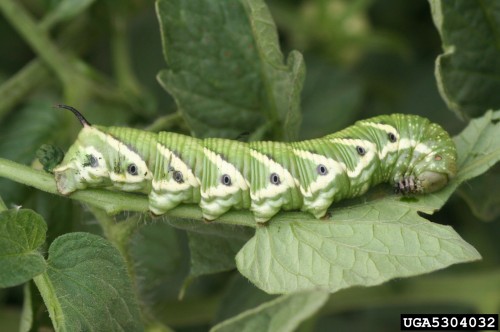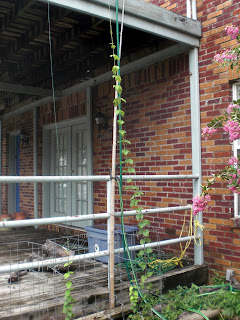I have sad news, at least as far as my hop growing adventures in Houston are concerned. We are in the process of moving to Washington, D.C.. There's a very good chance I will take up further adventures once there but that may have to wait 'til next spring. I should at least leave you with the current state of my hops here as well as a general summary.
We've been away for the past 3-4 weeks so they have received no attention from me at all in that time. Given this the fact that they have survived at all is a plus but there has been some loss:
This is the Willamette, which has been such as star. As you can see the cones have completely dried out and look pretty much useless. Given that I wasn't expecting much of a crop in my first year I'm not too disappointed.
Even the really big cone that appeared at the apical meristem has suffered. The rest of the plant has survived quite nicely though and I'm sure given some more time it would recover further. This is what all three look like lower down:
Even the Goldings have reached a respectable height now, but no sign of cones though. On a brighter note the Northern Brewer cones did manage to survive the last three weeks of neglect:
I really have no idea why these cones survived while those on the Willamette did not. If I had to guess I would say that the Northern Brewer gets more shade and that probably meant less direct sunlight and thus less drying out.
Overall, I'm pretty pleased with my first year's hop growing efforts. I wasn't expecting a huge amount, especially given the climate here in Houston. I've been pleasantly surprised at how well they've done. I'm sure that after a couple of years to establish themselves that these guys could start producing at a level that might be able to contribute to a brew at some point in the future. If you're in Houston and dithering about trying to grow hops for yourself, just do it!
While I'm committed to trying again in D.C., I'm not sure if taking them with me will be possible. We have a lot of packing to do and there may just not be time to arrange something. They weren't exactly expensive (at $5 a piece) so starting from scratch once there wouldn't be the end of the world. If there is time and opportunity I will take the rhizomes with me though.
That's all from me in Houston. Happy hop growing to all those here or elsewhere.
















































